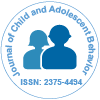Research Article
Multiproblem or Multirisk Families? A Broad Review of the Literature
Henk Jan Kolthof 1*, Martijn J Kikkert 2, Jack Dekker 31Child and adolescent psychiatrist at Lucertis, Child & Adolescent Psychiatry, Purmerend, Netherlands.
2Psychologist and researcher at the research department of Arkin, Amsterdam, Netherlands
3Head of Research at Arkin and Professor of Clinical Psychology, Free University, Amsterdam, Netherlands.
- *Corresponding Author:
- Henk Jan Kolthof
Child and adolescent psychiatrist at Lucertis
Waterlandplein, Child & Adolescent Psychiatry
1441 RP Purmerend, Netherlands
Tel: (00)31883581414
Fax: (00)3188-3584099
E-mail: h.kolthof@nh.lucertis.nl
Received Date: May 04, 2014; Accepted Date: July 25, 2014; Published Date: July 31, 2014
Citation: Kolthof HJ, Kikkert MJ and Dekker J (2014) Multiproblem or Multirisk Families? A Broad Review of the Literature. J Child Adolesc Behav 2:148. doi:10.4172/2375-4494.1000148
Copyright: © 2014 Kolthof HJ, et al. This is an open-access article distributed under the terms of the Creative Commons Attribution License, which permits unrestricted use, distribution, and reproduction in any medium, provided the original author and source are credited.
Abstract
Numerous psychosocial factors, as they occur in multiproblem families, make psychopathology more probable in developing children. This is important because assistance for these families generally focuses on the social side only. The aim of this study is to review these psychosocial risk factors by means of a literature review and to consider whether or not they provide a more accurate definition of multiproblem families. The results contain a list of psychosocial risk factors affecting parents and families. As a result of multiple psychosocial risk factors, multiproblem families have a negative impact on development and psychopathology in young children. Conclusion: a more concrete definition of what constitutes a multiproblem family, for example based on the total number of risk factors, will make it possible to develop scientific research and therefore more effective prevention and therapy.

 Spanish
Spanish  Chinese
Chinese  Russian
Russian  German
German  French
French  Japanese
Japanese  Portuguese
Portuguese  Hindi
Hindi 